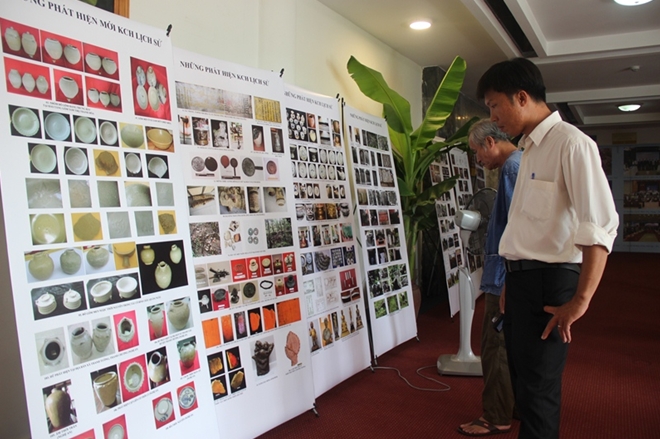New findings on archaeology in Vietnam announced
PSNews - New findings on archaeology in Vietnam is considered driving force for the Institute of Archaeology of Vietnam and relevant units in developing research programmes, contributing to protecting and promoting the values of heritages.
 |
Recently, the Vietnam Institute of Archaeology, the Vietnam Institute of Social Sciences in collaboration with the Hue Monuments Conservation Centre held the 53rd conference to announce new findings on archaeology in Vietnam.The two-day conference drew the participation of nearly 400 delegates who are archaeologists and experts in social science and heritage preservation
According to Dr.Nguyen Giang Hai, Director of the Vietnam Institute of Archaeology, at the conference, archaeologists delivered 356 reports on the new archaeological findings around Vietnam in four fields including prehistory archaeology (115 reports), history archaeology (184 reports), Champa-Oc Eo archaeology (41 reports), and underwater archaeology (10 reports). Six other reports addressed general issues.
 |
The reports included results of investigations and excavations, new findings and new methodologies for the period of 2017-2018.
The prehistory archaeology reports explained remarkable new findings thanks to the excavations at Roc Tung archaeological sites in Gia Lai province’s An Khe township. At the sites, archaeologists found stone axes that are believed to date to the pre-Epipaleolithic era found at sites in Central Highlands.
In the northern province of Tuyen Quang, scientists in late September announced the discovery of various traces of early people living 4,000 years ago in several caves in Pu Chua. Other interesting findings of prehistory archaeology were made in Krong No volcanic cave and Dac Son site in Dak Nong province as well as some others in Dak Lak, Son La and Lang Son.
 |
Excavations in the relics of Luy Lau ancient wall in Bac Ninh and Kinh Thien palace in Hanoi, and Hai Van Quan ancient gate in Thua Thien-Hue were part of the work of historic archaeologists.
The Champa-Oc Eo archaeology branch reported on the recent excavations including Phong Le tower in Da Nang, Champa pottery workshop site Go Cay Me in Binh Dinh, and architectural relic An Phong in Ben Tre. Underwater archaeologists listed the excavation of sunken ships in Lang Co in Thua Thien-Hue and in Binh Chau in Quang Ngai during the period.
“The new findings have offered more materials for the historical study of Vietnamese people. These will contribute much for the conservation and promotion of local culture and traditions in the context of global integration,” said Bui Van Liem, Deputy Director of the Vietnam Institute of Archaeology.
According to the institute’s director Nguyen Giang Hai, it will work closely with Russian archaeologists to enhance the scientific values of those findings in An Khe as well as UNESCO experts in developing the local underwater branch.
It also has plans to trace the DNA of those found in Tuyen Quang to find out the origin of the people.

